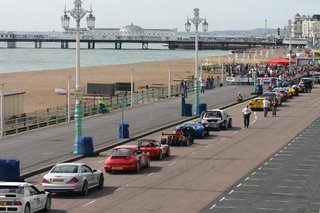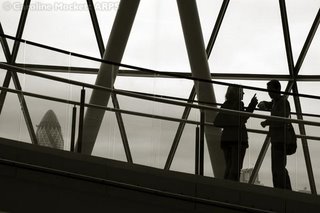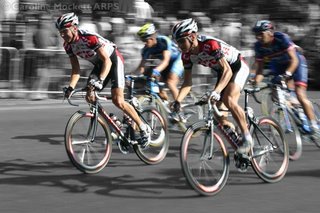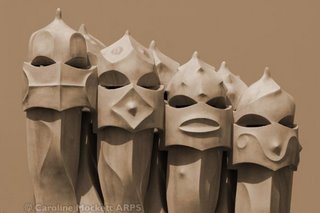 This was taken on Tower Bridge on Sunday, during a photographic day out with some friends. I had to wait for a bit to make sure there were no random roaming tourists in the shot, but I quite like the overall effect. You can see more mono shots from the day in my Mono Selection 4 Gallery.
This was taken on Tower Bridge on Sunday, during a photographic day out with some friends. I had to wait for a bit to make sure there were no random roaming tourists in the shot, but I quite like the overall effect. You can see more mono shots from the day in my Mono Selection 4 Gallery.If you've never been, take the opportunity to go to the Tower Bridge Exhibition - for just over a fiver you get to go up to the two high-level walkways above the bridge and see the Victorian pumping engines which were used to elevate the road decks when it was first built.
We were pretty jammy with the weather on Sunday, bearing in mind that we'd picked the date well in advance and it had been chucking with rain for most of the previous week. Here's a view from the walkways, looking towards the Isle of Dogs:
 The original idea for going out on a trip was to visit the Volume exhibition at the V&A, billed as an interactive sound and light show. We thought dusk would be a good time to hit the show, before all the colour has gone out of the sky. The exhibit itself was slightly disappointing, in that it was mute for our visit - no music at all, no matter how hard you flapped your arms! But I was quite pleased with the pictures I managed to get - this is one of the last I took:
The original idea for going out on a trip was to visit the Volume exhibition at the V&A, billed as an interactive sound and light show. We thought dusk would be a good time to hit the show, before all the colour has gone out of the sky. The exhibit itself was slightly disappointing, in that it was mute for our visit - no music at all, no matter how hard you flapped your arms! But I was quite pleased with the pictures I managed to get - this is one of the last I took: My EOS300D isn't bad in low-light conditions, especially when you wind the ISO setting up to 1600. I was also using my Canon 17-85mm IS [Image Stabilised] lens, which means you can hand-hold shots down to 1/15s or sometimes slower, without everything going blurred. Other folks in my group were using a tripod, which the V&A staff seemed not to mind (you have to be careful where you use a tripod these days) when we were outside. I rarely use a tripod (but do take a monopod with me to the rugby, to support my stupidly-heavy Sigma 135-400mm "pap" lens). It's just me being lazy, but I seem to work better that way. You can see more colour images from our day out in my General Colour - 9 Gallery.
My EOS300D isn't bad in low-light conditions, especially when you wind the ISO setting up to 1600. I was also using my Canon 17-85mm IS [Image Stabilised] lens, which means you can hand-hold shots down to 1/15s or sometimes slower, without everything going blurred. Other folks in my group were using a tripod, which the V&A staff seemed not to mind (you have to be careful where you use a tripod these days) when we were outside. I rarely use a tripod (but do take a monopod with me to the rugby, to support my stupidly-heavy Sigma 135-400mm "pap" lens). It's just me being lazy, but I seem to work better that way. You can see more colour images from our day out in my General Colour - 9 Gallery.If you only have access to a compact camera, it doesn't necessarily mean you will get bad pictures in low light, but you do need to be able to take some control of the camera, rather than just leaving it to get on with it. If you can, select the highest ISO rating the camera will cope with. Turn off the flash. Try and point the focus/exposure centre spot not at the brightest thing in the scene (you will end up with a very dark image) but at some mid-tones. This way, you should get a reasonable balance to the exposure. Shutter speeds are likely to be quite slow, so any way of supporting the camera is a good idea - tripod, monopod, brace against a wall/lamp-post/friend's shoulder. And don't breathe in while you press the shutter!
Here's a few more low-light and festive images I took this time last year.





















